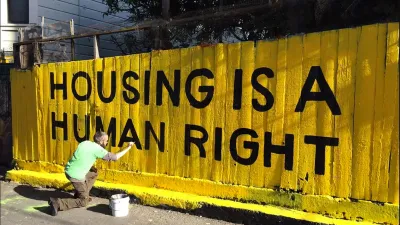Residents of Rust Belt cities might pay less for housing, but they pay a lot more for energy.

"Energy costs are an important factor to consider when choosing a home to buy or rent, yet they’re rarely included among statistics reflecting housing affordability," according to an article by Taylor Marr.
In an effort to reverse that neglect, Marr provides a list of the ten highest and lowest cities in terms of how much residents pay for energy relative to their housing costs. In some parts of the country, reports Marr, energy costs "can add more than 50 percent to annual housing costs…"
High energy costs are more common in the Rust Belt. The three metropolitan with the highest energy costs relative to their housing costs are Cleveland, Rochester, and Cincinnati. Meanwhile, the three metropolitan areas with the lowest energy costs relative to their housing costs are San Francisco, San Jose, and Orange County—all in California.
The high housing costs of California metropolitan areas obviously distort the comparison. Cleveland residents pay $3,500 a year in energy costs, while San Francisco residents pay $1,300 in annual energy costs, according to the data used for the article. Cleveland residents only pay $6,600 in annual housing costs, however, while San Francisco residents pay $58,000.
FULL STORY: The Inequality of Energy Costs: California Homeowners Get a Break

Alabama: Trump Terminates Settlements for Black Communities Harmed By Raw Sewage
Trump deemed the landmark civil rights agreement “illegal DEI and environmental justice policy.”

Planetizen Federal Action Tracker
A weekly monitor of how Trump’s orders and actions are impacting planners and planning in America.

Why Should We Subsidize Public Transportation?
Many public transit agencies face financial stress due to rising costs, declining fare revenue, and declining subsidies. Transit advocates must provide a strong business case for increasing public transit funding.

Understanding Road Diets
An explainer from Momentum highlights the advantages of reducing vehicle lanes in favor of more bike, transit, and pedestrian infrastructure.

New California Law Regulates Warehouse Pollution
A new law tightens building and emissions regulations for large distribution warehouses to mitigate air pollution and traffic in surrounding communities.

Phoenix Announces Opening Date for Light Rail Extension
The South Central extension will connect South Phoenix to downtown and other major hubs starting on June 7.
Urban Design for Planners 1: Software Tools
This six-course series explores essential urban design concepts using open source software and equips planners with the tools they need to participate fully in the urban design process.
Planning for Universal Design
Learn the tools for implementing Universal Design in planning regulations.
Caltrans
Smith Gee Studio
Institute for Housing and Urban Development Studies (IHS)
City of Grandview
Harvard GSD Executive Education
Toledo-Lucas County Plan Commissions
Salt Lake City
NYU Wagner Graduate School of Public Service




























